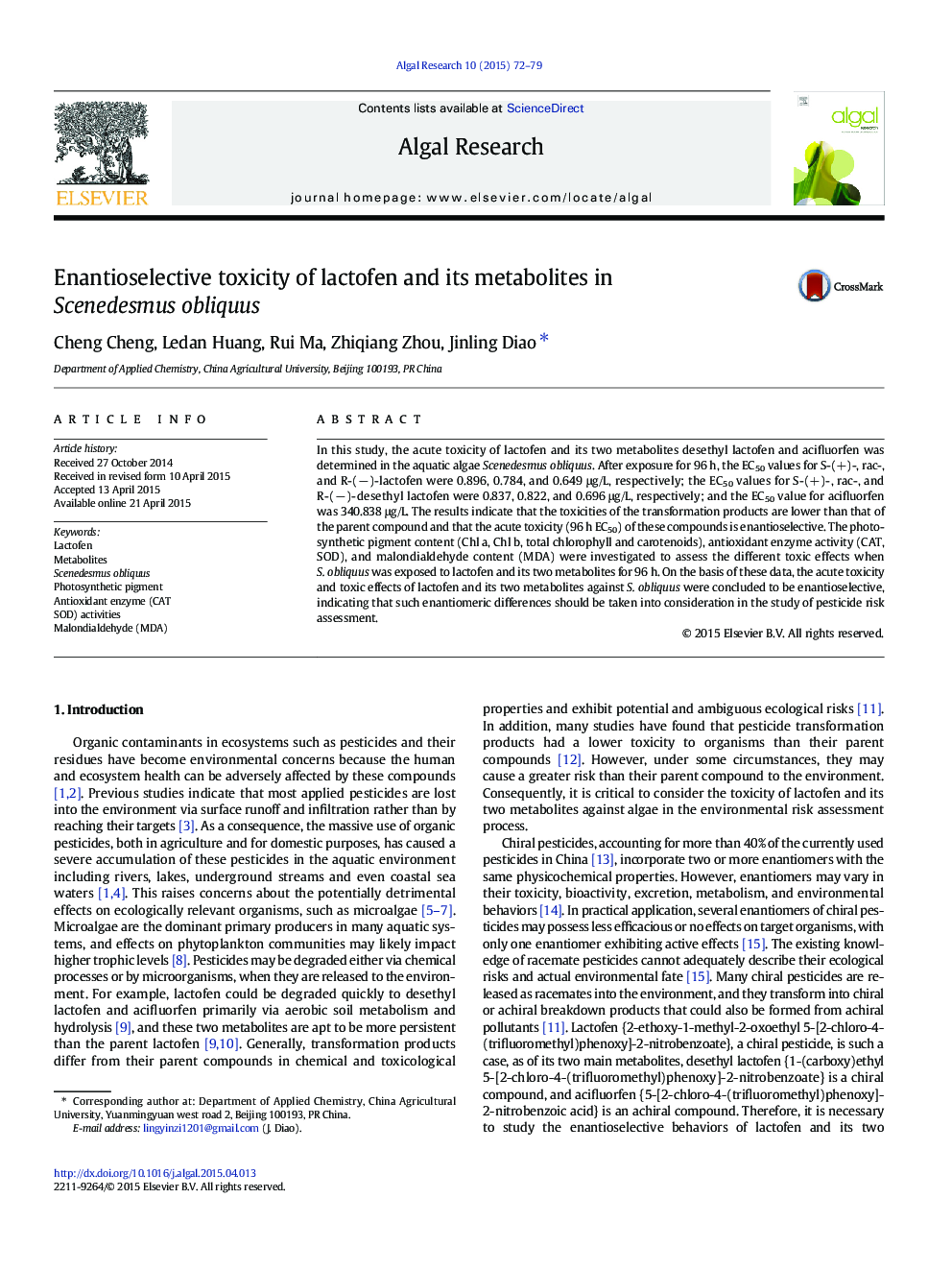| Article ID | Journal | Published Year | Pages | File Type |
|---|---|---|---|---|
| 1742032 | Algal Research | 2015 | 8 Pages |
•Lactofen was more toxic than its transformation products to Scenedesmus obliquus.•R- was more toxic than S- to S. obliquus exposed to lactofen and desethyl lactofen.•Toxic effects of lactofen and desethyl lactofen to S. obliquus were enantioselective.
In this study, the acute toxicity of lactofen and its two metabolites desethyl lactofen and acifluorfen was determined in the aquatic algae Scenedesmus obliquus. After exposure for 96 h, the EC50 values for S-(+)-, rac-, and R-(−)-lactofen were 0.896, 0.784, and 0.649 μg/L, respectively; the EC50 values for S-(+)-, rac-, and R-(−)-desethyl lactofen were 0.837, 0.822, and 0.696 μg/L, respectively; and the EC50 value for acifluorfen was 340.838 μg/L. The results indicate that the toxicities of the transformation products are lower than that of the parent compound and that the acute toxicity (96 h EC50) of these compounds is enantioselective. The photosynthetic pigment content (Chl a, Chl b, total chlorophyll and carotenoids), antioxidant enzyme activity (CAT, SOD), and malondialdehyde content (MDA) were investigated to assess the different toxic effects when S. obliquus was exposed to lactofen and its two metabolites for 96 h. On the basis of these data, the acute toxicity and toxic effects of lactofen and its two metabolites against S. obliquus were concluded to be enantioselective, indicating that such enantiomeric differences should be taken into consideration in the study of pesticide risk assessment.
